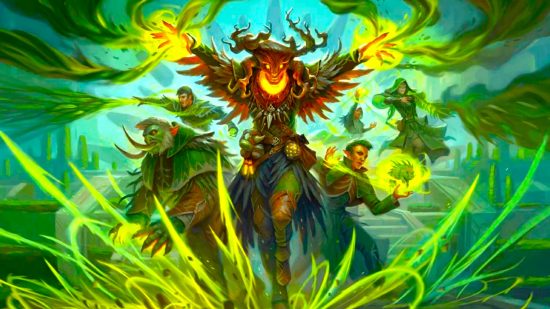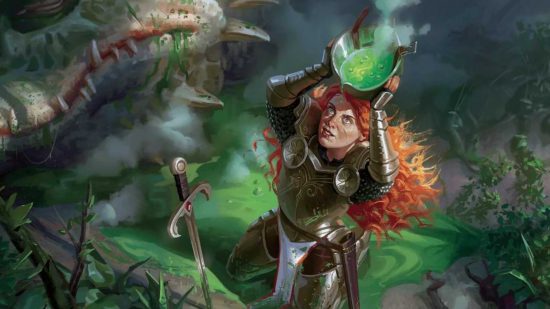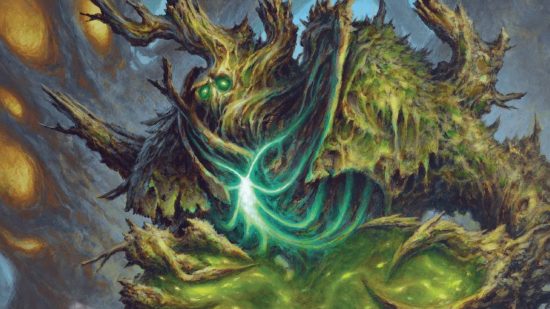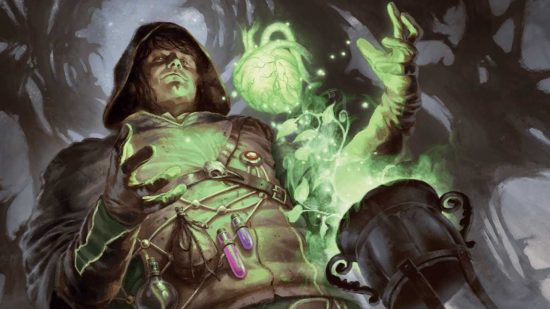Cantrips are the bread and butter of every spellcaster in Dungeons and Dragons, and Poison Spray 5e offers quite a bit of damage for its cost. With one of the highest base damage dice for a cantrip at 1d12, many newbies are tempted to pick up DnD Poison Spray. Plus, it fits thematically with several poison-based builds, so why wouldn’t a poison master build have it? Well, that’s what this guide hopes to enlighten you about.
Poison Spray has a lot of downsides that aren’t apparent if you’re just learning how to play Dungeons and Dragons. Frankly speaking, Poison Spray regularly joins the roster of worst DnD spells in 5e. This guide can explain exactly how the DnD cantrip works, as well as how different DnD classes and 5e feats can make it a bit better.
Poison Spray 5e Features
Here are the basics you need to know about Poison Spray:
| Level | Cantrip |
| Casting Time | One action |
| Range | 10 feet |
| Duration | Instantaneous |
| Attack/Save | Constitution |
| Damage | 1d12 (at level 1) |
| School | Conjuration |
What does Poison Spray 5e do?
Casters extend their hand toward a creature in range and conjure a puff of poison gas from their palms. The creature must succeed on a Constitution saving throw or suffer 1d12 poison damage. The spell’s damage increases by 1d12 at certain DnD level ups (5th, 11th, and 17th) for a maximum of 4d12.
Who can cast Poison Spray 5e?
If you want to cast Poison Spray, you’ll need to choose one of the following classes:
Players can also attain this cantrip through feats like Artificer Initiate, Magic Initiate, Spell Sniper, and Wood Elf Magic. DnD subclasses with access to other class spell lists, like Arcana Cleric 5e, can also gain access to Poison Spray.
The Pros and Cons of Poison Spray 5e
It’s easier to start with what Poison Spray does have going for it. Firstly, Poison Spray is a cantrip, so casting it doesn’t require a spell slot. Secondly, it deals 1d12 damage, which makes it a potential one-shot nova against weaker DnD monsters. In early levels, the damage potential alone could resolve unexpected battles quickly.
Unfortunately, the pros end there. Poison Spray gained its reputation through harsh lessons on why ‘big numbers’ don’t always mean better. The 1d12 damage is undoubtedly among the highest single-target damage for a cantrip in 5e, but it’s not as impressive as it sounds. Poison Spray’s 1d12 only deals two more damage points than Firebolt’s 1d10. As enemies grow more powerful, a potential two extra damage doesn’t cut it.
Secondly, Poison Spray has an abysmal range. At 10 ft, most casters are far too close for comfort. Meanwhile, most cantrips have a minimum range of at least 60 feet, with damage spells like Firebolt having up to 120 feet. Even worse, Poison Spray only targets a single creature, despite the “spray” in its name.
Third, Poison Spray deals poison damage, one of the worst DnD damage types. Entire enemy groups, such as Undead and Constructs, ignore poison damage thanks to their immunity. Think of how many of those parties will face in the average DnD campaign. The Poison Spray cantrip notably does not inflict the ‘Poisoned’ status effect either.
Finally, it requires a Constitution saving throw instead of an attack roll. Most monsters have decent CON, so it’s likely the damage won’t even roll in the first place. Most enemies will probably succeed in saving throws half the time.
Best Strategies for Poison Spray 5e
Despite the plethora of cons for Poison Spray, you may still want to use it for roleplaying reasons. In that case, creative players still have ways to make Poison Spray more viable in combat. The Spell Sniper feat will mitigate some of Poison Spray’s awful range, making it 20 feet instead of 10 feet. War Caster also lets you use Poison Spray as a DnD Opportunity Attack, a handy feature in the thick of battle.
Avoid the Poisoner feat at all costs. While it sounds good on paper, very few enemies have poison resistance. Poisoner also doesn’t get around the immunity of Undead and Constructs, a common misconception many have about the feat.
Class-wise, five levels into Artificer Alchemist gives players access to Alchemical Savant. The feature grants bonus dice for poison damage, equivalent to your Intelligence modifier. Players can then dip into Evocation Wizards for Potent Cantrip, which guarantees half damage even if a creature succeeds in its saving throw.
Draconic Bloodline Sorcerers can opt for the Green Dragon ancestry to add their Charisma modifier to their Poison damage. If a creature resists or ignores Poison damage, Sorcerers can spend one Sorcery Point to transmute the damage into something else with Metamagic.
Overall, Poison Spray is a suboptimal cantrip with too many downsides to worry about. It’s best to pick up damage-dealing cantrips like Toll the Dead or Acid Splash if you want the ‘rot’ theme to remain viable.
For more spell guides, here’s everything you need to know about DnD Wall of Fire. Or, for DnD character build options, here are some comprehensive guides to DnD races and DnD backgrounds.





